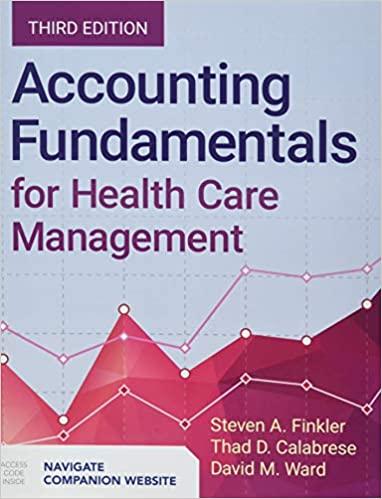One Stop Invitations & More does customize, hand-crafted wedding memorabilia, in which each batch of items is a job. The company has a highly labour-intensive production process, so it allocates manufacturing overhead based on direct labour hours. The business expects to incur $2,400,000 of manufacturing overhead costs and to use 40,000 direct labour hours during 20X9. At the end of May June 20X9, One Stop Invitations & More reported the following inventories: Raw Materials Inventory $200,000 Work-in-Progress Inventory $170,000 Finished Goods Inventory $110,000 During July 20X9, One Stop Invitations & More actually used 3,000 direct labour hours and recorded the following transactions. i) Purchased materials on account $310,000 ii) Manufacturing wages incurred $400,000 iii) Materials requisitioned (includes $30,000 of indirect materials) $420,000 iv) Assigned manufacturing wages, 90% direct labour, 10% indirect labour v) Other manufacturing overhead incurred $130,000 vi) Allocated manufacturing overhead for July 20X9 vii) Cost of jobs completed $995,000 viii) Cost of jobs sold (on account) at a margin of 33% $960,000 Required: (a) Compute One Stops predetermined manufacturing overhead rate for 20X9. (2 mark) (b) State the journal entries necessary to record the above transactions in the general journal. Assume that One Stop uses the perpetual inventory system. (10 marks) (c) Post the manufacturing overhead transactions to the Manufacturing Overhead T-account, clearly showing the balance before closing the account. State the journal entries necessary to dispose of the variance. Assume that the manufacturing overhead variance is immaterial. (3 marks) (d) What is the balance in the Cost of Goods Sold account after the adjustment? (2 marks) (e) Compute One Stops gross profit earned on the jobs sold, after adjusting for the manufacturing overhead variance (2 marks) (f) Post the appropriate entries to Materials Inventory, Work-in-Process Inventory and Finished Goods Inventory accounts and determine each account balance on July 31, the end of the month.


One Stop Invitations & More does customize, hand-crafted wedding memorabilia, in which each batch of items is a job. The company has a highly labour-intensive production process, so it allocates manufacturing overhead based on direct labour hours. The business expects to incur $2,400,000 of manufacturing overhead costs and to use 40,000 direct labour hours during 20X9. At the end of May June 20x9, One Stop Invitations & More reported the following inventories: Raw Materials Inventory $200,000 Work-in-Progress Inventory $170,000 Finished Goods Inventory $110,000 During July 20x9, One Stop Invitations & More actually used 3,000 direct labour hours and recorded the following transactions. i) Purchased materials on account $310,000 ii) Manufacturing wages incurred $400,000 iii) Materials requisitioned (includes $30,000 of indirect materials) $420,000 iv) Assigned manufacturing wages, 90% direct labour, 10% indirect labour Other manufacturing overhead incurred $130,000 vi) Allocated manufacturing overhead for July 20x9 vii) Cost of jobs completed $995,000 viii) Cost of jobs sold (on account) at a margin of 3373% $960,000 Required: (a) (b) (c) Compute One Stop's predetermined manufacturing overhead rate for 20X9. (2 mark) State the journal entries necessary to record the above transactions in the general journal. Assume that One Stop uses the perpetual inventory system. (10 marks) Post the manufacturing overhead transactions to the Manufacturing Overhead T-account, clearly showing the balance before closing the account. State the journal entries necessary to dispose of the variance. Assume that the manufacturing overhead variance is immaterial. (3 marks) What is the balance in the Cost of Goods Sold account after the adjustment? (2 marks) Compute One Stop's gross profit earned on the jobs sold, after adjusting for the manufacturing overhead variance (2 marks) Post the appropriate entries to Materials Inventory, Work-in-Process Inventory and Finished Goods Inventory accounts and determine each account balance on July 31, the end of the month. (6 marks) (d) (e) (f) One Stop Invitations & More does customize, hand-crafted wedding memorabilia, in which each batch of items is a job. The company has a highly labour-intensive production process, so it allocates manufacturing overhead based on direct labour hours. The business expects to incur $2,400,000 of manufacturing overhead costs and to use 40,000 direct labour hours during 20X9. At the end of May June 20x9, One Stop Invitations & More reported the following inventories: Raw Materials Inventory $200,000 Work-in-Progress Inventory $170,000 Finished Goods Inventory $110,000 During July 20x9, One Stop Invitations & More actually used 3,000 direct labour hours and recorded the following transactions. i) Purchased materials on account $310,000 ii) Manufacturing wages incurred $400,000 iii) Materials requisitioned (includes $30,000 of indirect materials) $420,000 iv) Assigned manufacturing wages, 90% direct labour, 10% indirect labour Other manufacturing overhead incurred $130,000 vi) Allocated manufacturing overhead for July 20x9 vii) Cost of jobs completed $995,000 viii) Cost of jobs sold (on account) at a margin of 3373% $960,000 Required: (a) (b) (c) Compute One Stop's predetermined manufacturing overhead rate for 20X9. (2 mark) State the journal entries necessary to record the above transactions in the general journal. Assume that One Stop uses the perpetual inventory system. (10 marks) Post the manufacturing overhead transactions to the Manufacturing Overhead T-account, clearly showing the balance before closing the account. State the journal entries necessary to dispose of the variance. Assume that the manufacturing overhead variance is immaterial. (3 marks) What is the balance in the Cost of Goods Sold account after the adjustment? (2 marks) Compute One Stop's gross profit earned on the jobs sold, after adjusting for the manufacturing overhead variance (2 marks) Post the appropriate entries to Materials Inventory, Work-in-Process Inventory and Finished Goods Inventory accounts and determine each account balance on July 31, the end of the month. (6 marks) (d) (e) (f)








